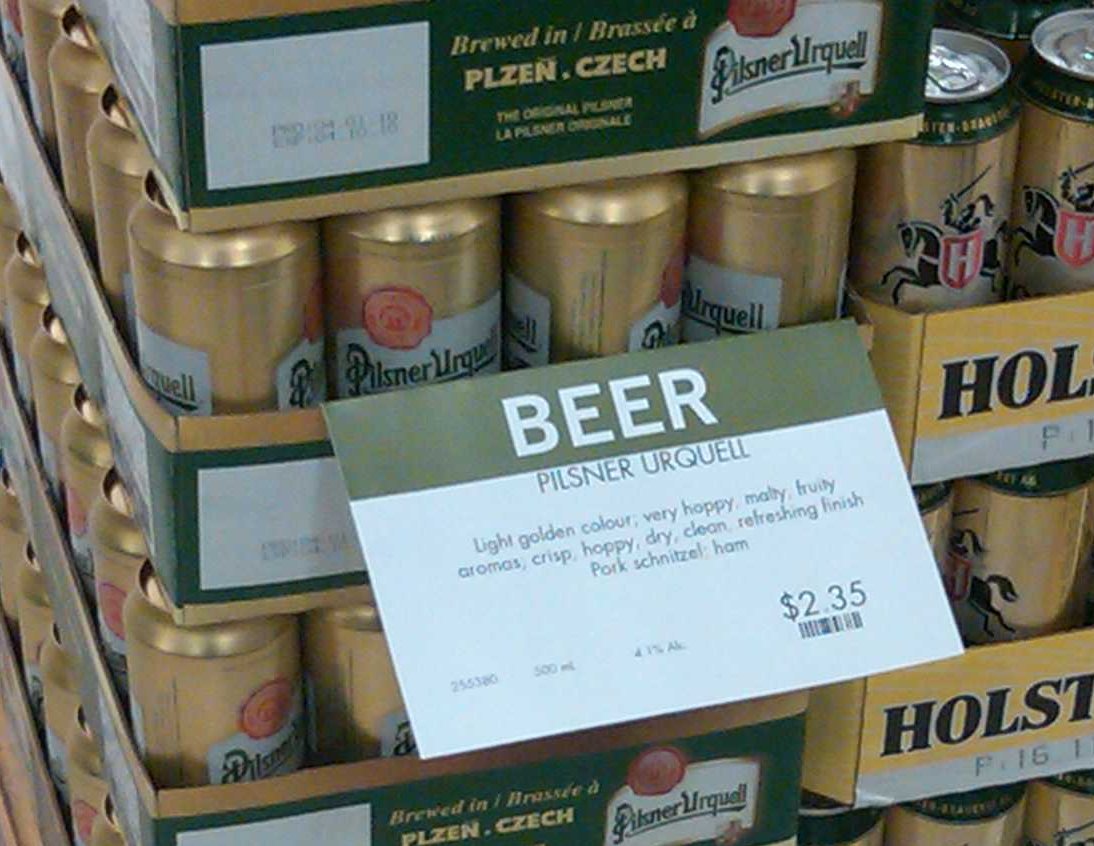
Canada is a lovely country: Nice people, a beautiful landscape and a relatively well-developed education system; but a
few things bother me since I arrived here, among them the existence of the LCBO in Ontario. Being originally from
Germany the extremely high beer prices in Ontario are far from acceptable for me. Paying about 50 CAD for a decent
24-pack of your favorite beer is not ok. I do not want to go into the roots of the problem with LCBO, but the money
collected over there is far away from the actual manufacturing cost of the beer for various arguable reasons. More
recently the option to buy “de-alcoholized beer” emerged at several grocery stores. Unfortunately the reverse-osmosis process used to remove the alcohol, in my view, also takes away most of the beer’s flavor. Ironically, the
de-alcoholizing step increases the cost of production significantly; however, it is sold far cheaper than the alcoholic
equivalent in the LCBO. Out of curiosity, I paid 7 CAD for a 24 of “Compliments De-Alcoholized Beer” from Sobeys only to find out later that the taste is merely mediocre.
My current roommate, Phillip, is a visiting scholar in Chemistry from Germany, who is also very annoyed by
“the beer situation” in Ontario. Together we decided to claim our independence from this suppressive legislation by
brewing our own stuff. This article is a description of what we did to change the situation. Our objective was to find
a way to brew our own stuff by just using readily available supplies from the Grocery store.
Solution Approach
Brewing beer is a skill and it takes plenty time and effort to master the process. Moreover, most of the actual
ingredients used to produce high-quality beer are not readily available in a grocery store. As such we resent to try
Ginger Beer an ancient drink from Greece that made it later to Britain. The main reason for this decision is the
straightforward brewing process that only requires a few readily available ingredients. According to Wikipedia, the
fermentation process may yield up to 11% of alcohol; but according to my roommate it will actually be much less using
grocery-store-ingredients and a short fermentation process.
Required utilities and ingredients for 1.5l of beer:
- 4-5 cm of a thumb-thick ginger root,
- 1 cup of sugar (we used brown sugar but that is up to your flavor),
- 2 tbsp of lemon juice,
- 0.5 tsp of bakery yeast,
- 1.5l of water,
- An empty 2 liter plastic bottle, a plastic funnel, a big pot, and, optional, a coffee filter (or cooked towel).
Procedure
At first start by cleaning and cutting the ginger. Cut it into very tiny pieces to ensure a good flavor extraction later on.
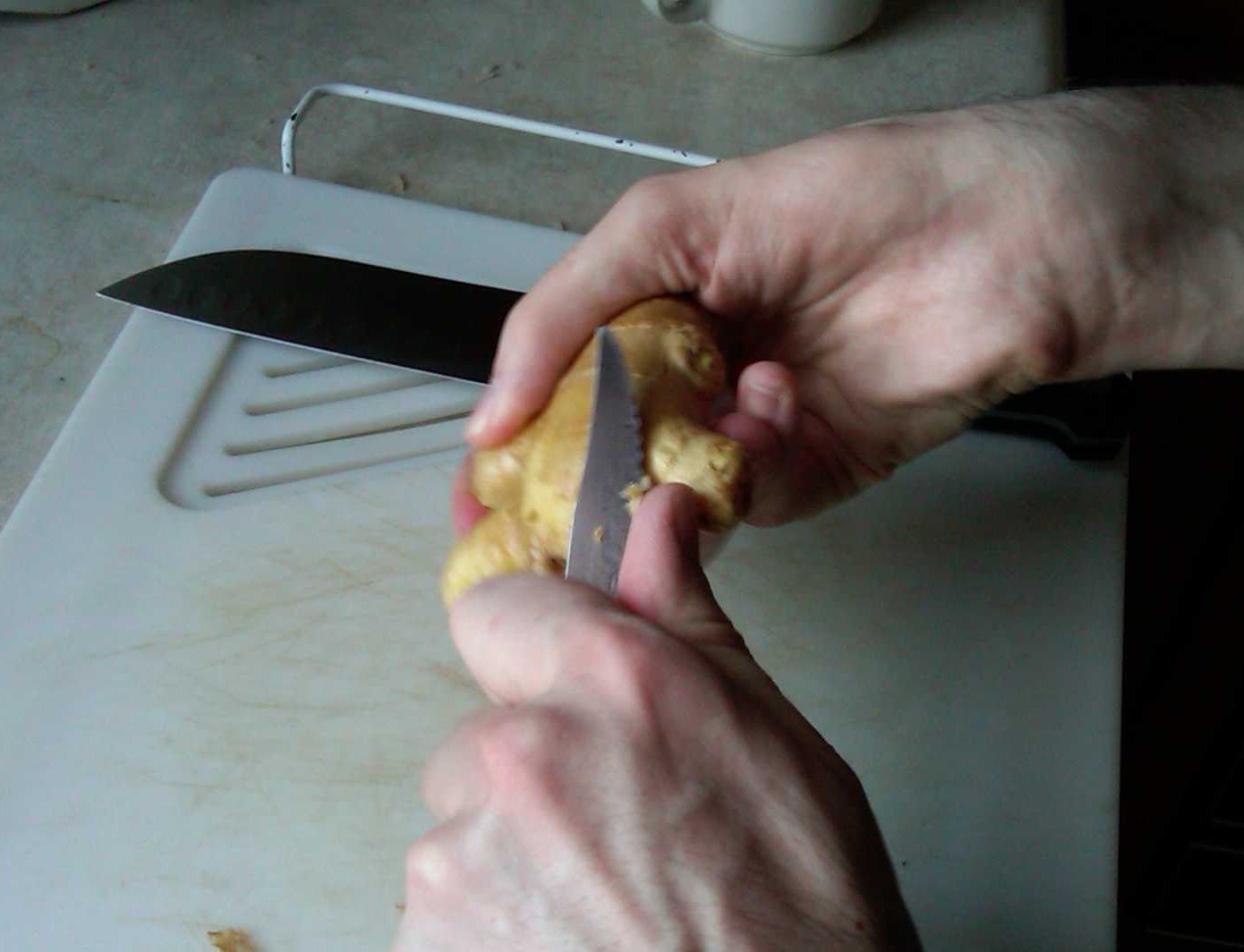
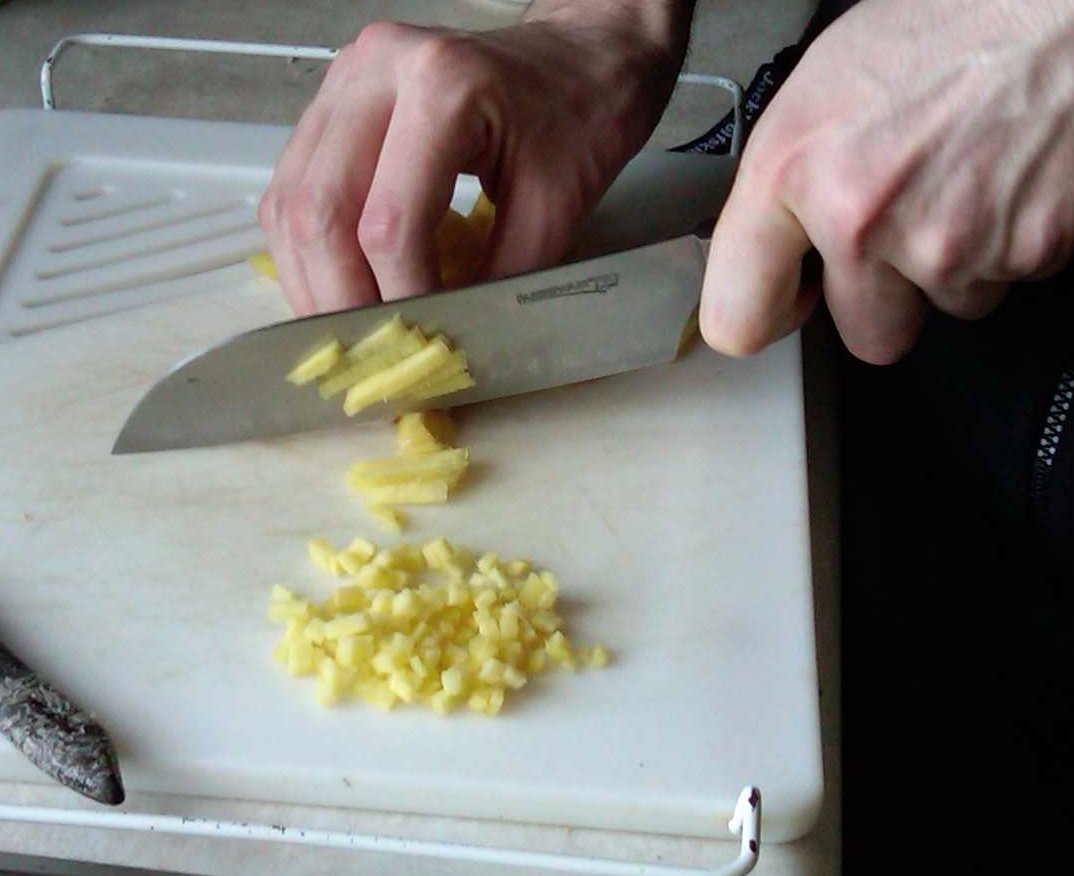
Next, mix the ginger, sugar, lemon juice in the big pot and bring it to simmer. Stir it, so nothing sticks to the pot.
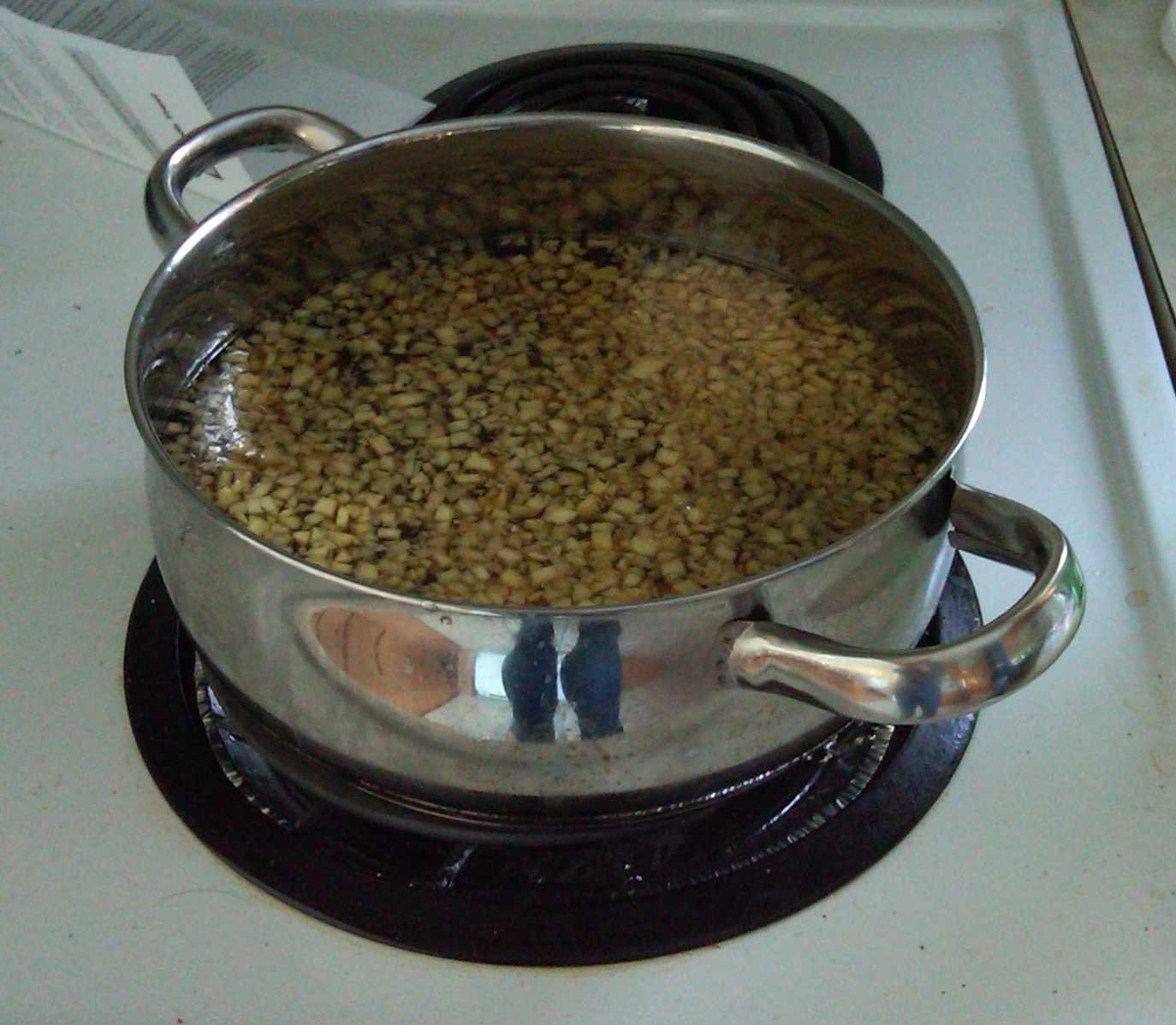
After simmering it for 3-5 minutes, let it cool off for some time. It needs to cool off below +35C; otherwise you would
kill the yeast, which is added afterwards. The Canadian winter is your friend in that regard; we just put it out in the
snow for 25 minutes and watched the Olympics.
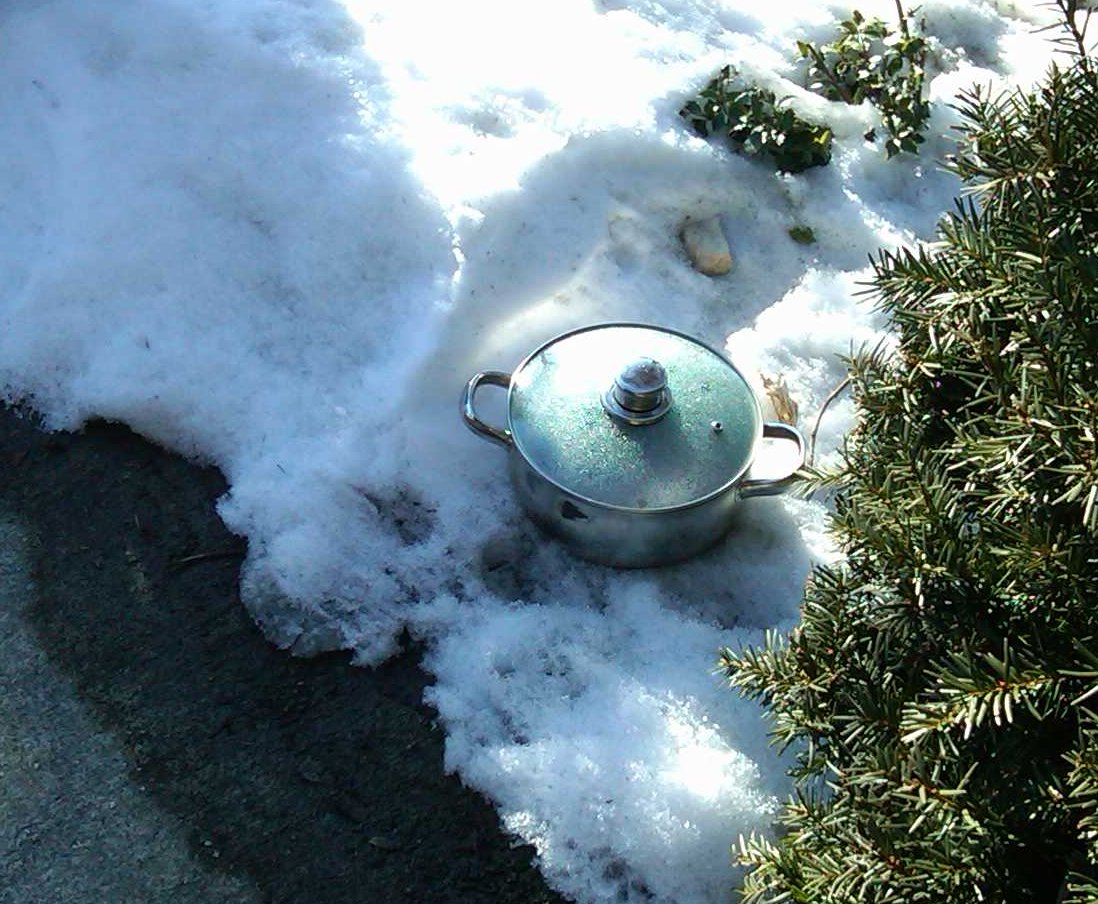
When the mixture is cold, add the yeast and stir it.
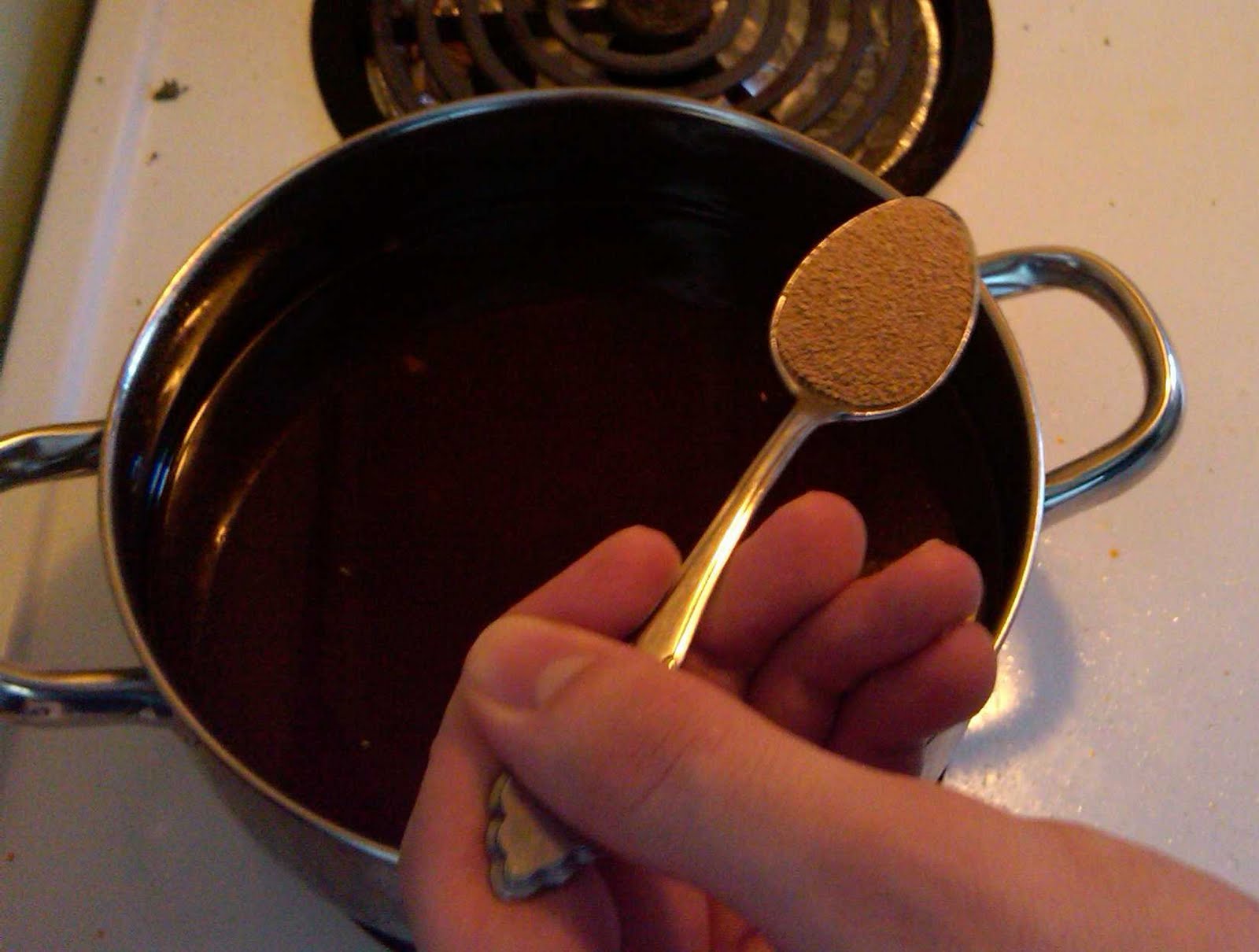
Next put the stuff into a 2l plastic bottle and leave about ¼ of the bottle empty. This air pocket is needed to start
the aerobic fermentation. Although most of you might expect the yeast to get busy creating alcohol but at first it
actually converts the sugar and the oxygen into carbonic acid, which you might see as tiny bubbles (i.e., carbonic
acid dissolves to carbon dioxide and water).
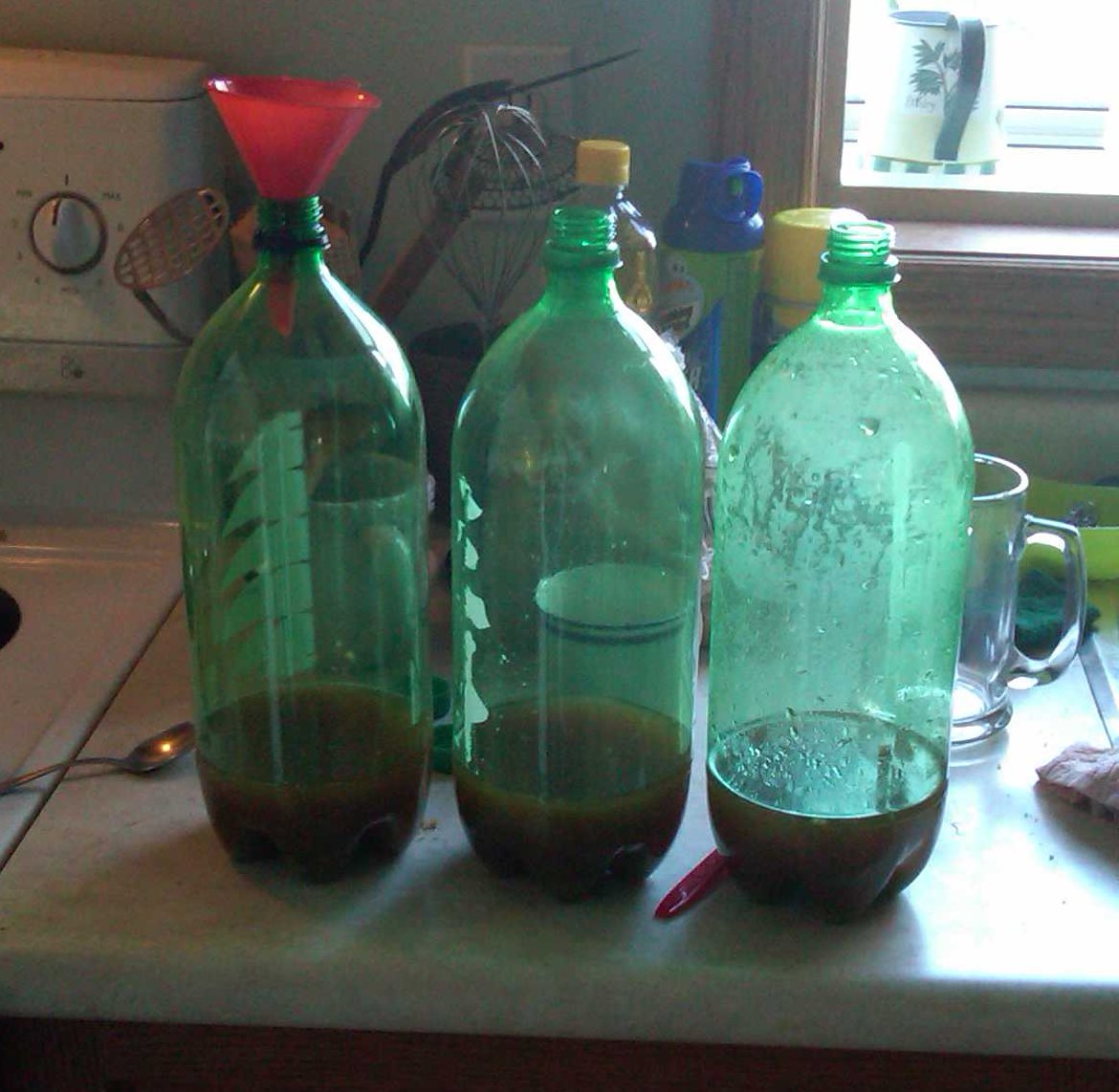
Keep the bottle in a warm spot (i.e., a furnace channel as shown in the picture) to keep the yeast busy. Periodically
monitor the pressure in the plastic bottle. The yeast can produce a lot of carbonic acid. If you do not pay attention
the bottle may actually explode and create a big mess. If you cannot press-in the plastic of the plastic bottle anymore
it is time to set the yeast out of work. The yeast slows down the fermentation process if you put it in a cold spot,
preferably a fridge.
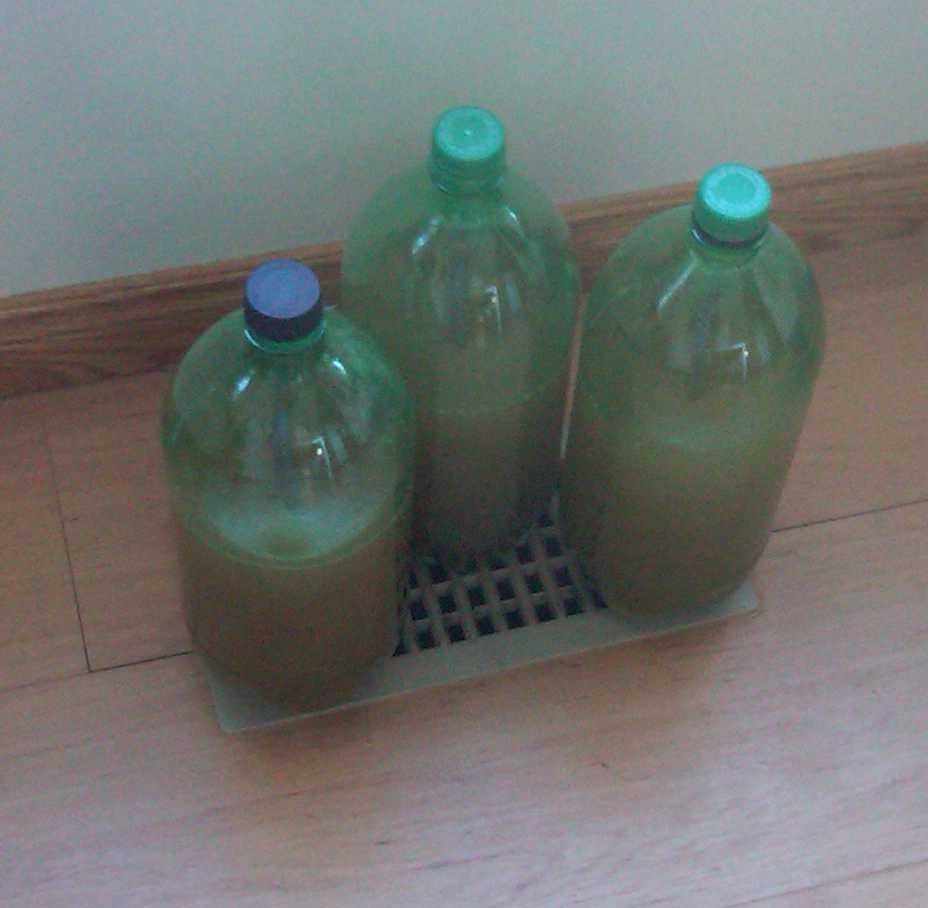
Leave the closed bottle inside the fridge for 24 hours.
The following step is optional and a matter of taste. In order to remove the ginger pieces and any clusters of
yeast, you may want to filter the beer after the brewing process. A coffee filter works best to remove most of the
remaining solids.
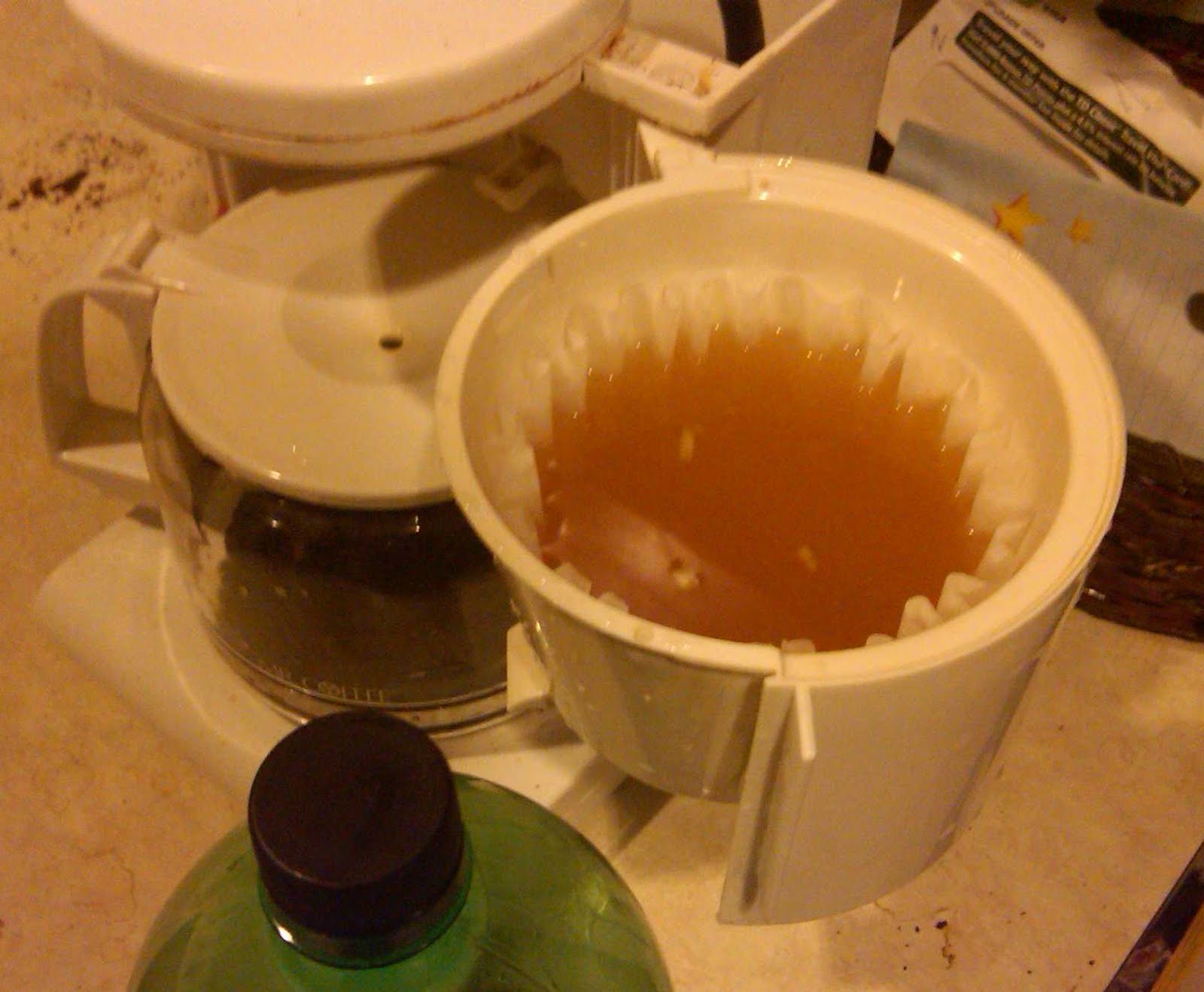
Because of the filtering step, however, most of the carbonic acid will dissolve to carbon-dioxide and water; such that,
the sparkling is gone. The very short fermentation process will give you mainly carbonic acid and little alcohol;
however, I can assure you that your own brewed ginger beer will outperform any of the refined ginger ales (i.e.,
alcohol removed) from nearby grocery stores by taste.
Risks and Potential Improvements
Since the described fermentation process actually only takes a matter of hours the procedure is relatively safe. If
however, you want to push the alcohol concentration higher and extend the duration of the fermentation you might get
problems. The issue with limiting yourself to grocery store ingredients is that the quality of the produced alcohol
will be low due to the yeast used. If you perform the following process for lengthy periods to have a high alcohol
yield you will end up with a heavy headache at best and vision problems at worst. In the anaerobic phase (i.e., all
the oxygen is gone) of the fermentation the bakery yeast actually generates traces of complex alcohols, including
methanol, propanol and isopropanol (a.k.a. heavy headache!). A high-quality brewer’s yeast would generate more ethanol
in the anaerobic phase than baker’s yeast and, therefore, probably be better suitable for brewing for lengthy periods.
In order to obtain the claimed 11% of Wikipedia, you would have to have the fermentation going for a matter of weeks.
Conclusion and Future Work
In my eyes the policies and concepts of the LCBO are antiquated at best and arguably at worst. Canada compared to
Germany is the other extreme, back home one could end up with store configurations that would sell beer cheaper than
soda water. Unfortunately, it is not in my hand to change legislation in Ontario in favor of that. In order to overcome
the impact of that legislation, you need to take your fate into your own hands and claim your own independence. Producing
ginger beer for personal consumption provides a relatively safe low-cost alternative to commercially sold beer in Ontario.
If you only consider the cost of the ingredients, you even fare cheaper than refined ginger ale (i.e., alcohol removed)
brands. And the best of it is that it is your own stuff.
Having established the basics of alcoholic fermentation we actually might consider some advanced topics of beer brewing,
wine-making, or even fractional distillation to create liquor (after the legal issues in Canada are reviewed) in the
near future.
Published: 2010-02-24
Updated : 2025-10-04
Not a spam bot? Want to leave comments or provide editorial guidance? Please click any
of the social links below and make an effort to connect. I promise I read all messages and
will respond at my choosing.